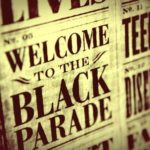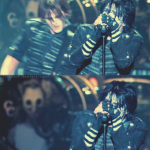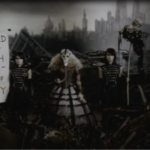Here was an ambitious concept record that mixed piano ballads, vaudeville and knuckle-cracking punk/pop that attracted an older audience, while still holding their teen fanbase in thrall. The result was that The Black Parade sold well over three million, making MCR one of the hottest US rock acts around.
Yet the album quickly became an albatross, a burden exacerbated by tabloid outrage, which in 2008 linked the band to a self-harming cult among their teenage fans. “ The Black Parade ,” explains Way – who, sitting cosily in a sofa chair, expresses himself via a gentle and sincere flow of words – “was a burden emotionally and physically, as well as culturally being a heavy weight. But then I learnt to love it again, which came down to playing the shows, and seeing the responses to it.
“The process of re-engagement with the album began with honestly sitting down and doing media interviews like this, and also just talking to people about it. When we were touring it for over two years, we didn’t realise what it meant to people. We had no perception of it because we didn’t look for it. All we felt was the negative cultural impact – not bad reviews of shows or albums, but rather the tabloidism that went around.”
““The perception about The Black Parade was that it was a full-frontal-assault-with- guns-blazing album, but it took us almost three years to sell three million records. That gradual process is how it should be, because it gives people time to digest, understand and appreciate. I know a lot of the ‘full-frontal’ kind of records – they come out, everybody goes wow, everyone wants to like them straight away, yet within a few months they get bored with them; within a year or so, they don’t talk about them at all. A challenging record is one that people have to think about, and that will last longer.”





